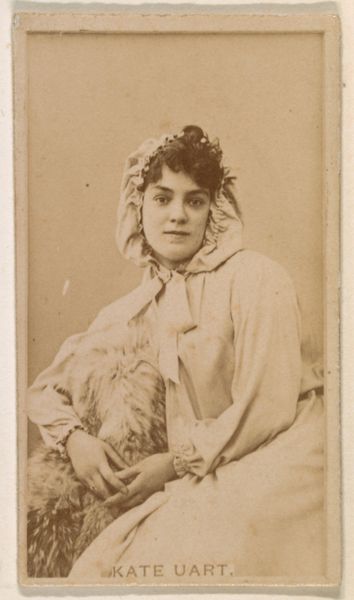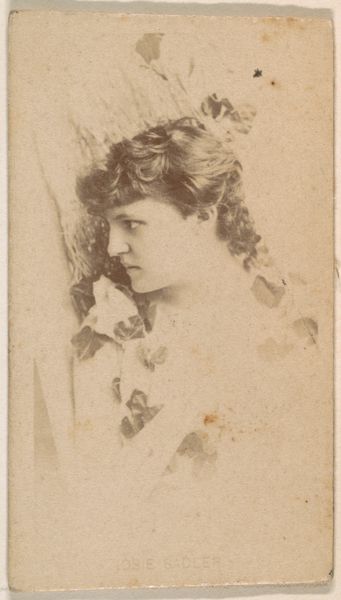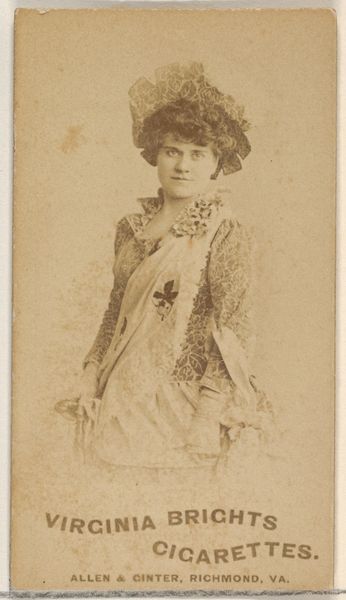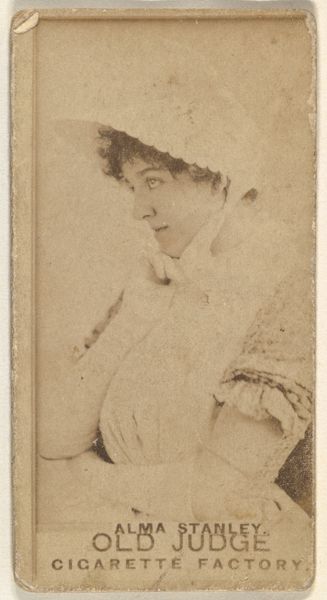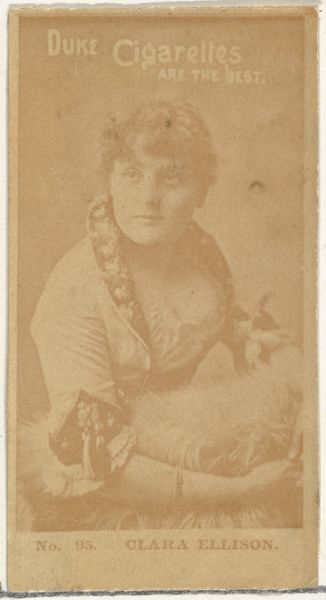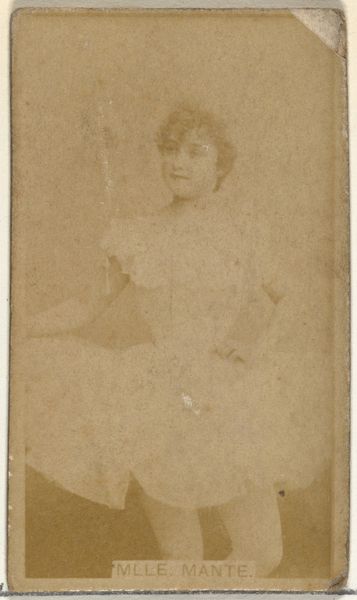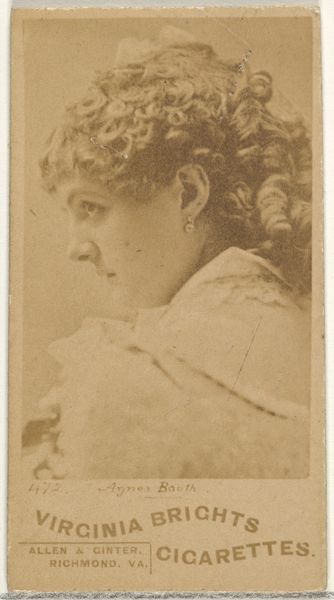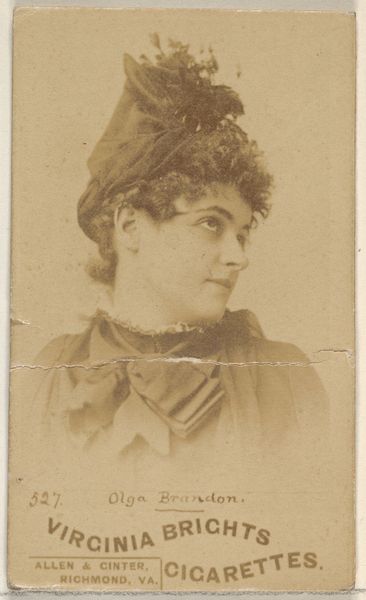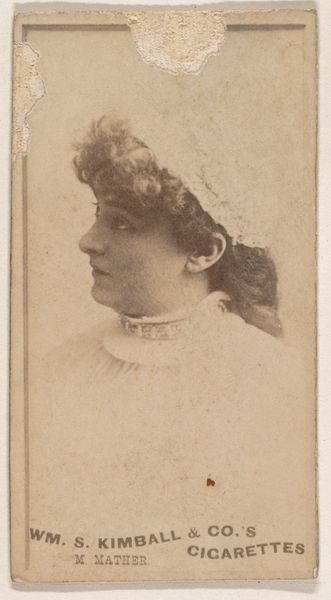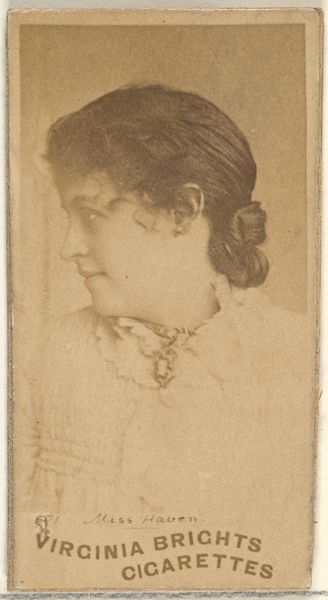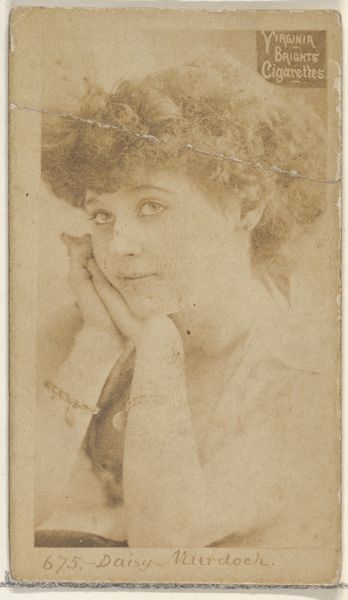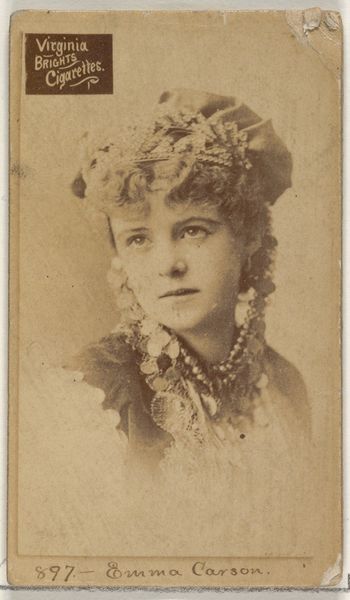
Kate Uart, from the Actors and Actresses series (N145-8) issued by Duke Sons & Co. to promote Duke Cigarettes 1890 - 1895
0:00
0:00
drawing, print, photography, albumen-print
#
portrait
#
drawing
# print
#
photography
#
albumen-print
Dimensions: Sheet: 2 11/16 × 1 3/8 in. (6.8 × 3.5 cm)
Copyright: Public Domain
Curator: Welcome. Today, we're looking at an albumen print from between 1890 and 1895, part of the Actors and Actresses series issued by Duke Sons & Co. The image is titled "Kate Uart," named for the actress it portrays. Editor: There’s something instantly captivating about this portrait. It's the intimacy, perhaps? It feels as if we are peering into a private moment. The tones are muted, giving it this ethereal, dreamlike quality, as though remembering something lost to time. Curator: The symbolism is interesting, especially considering its origins. This wasn’t simply art; it was promotional material distributed with Duke Cigarettes. Consider what the figure of an actress, framed by burgeoning commercialism, represents about societal values. Editor: Precisely. An actress's likeness associated with leisure, pleasure, and perhaps even transgression. The image works to reinforce, then, specific notions of femininity tied to performance, consumption, and celebrity, constructing desires through accessible, commodified images. How are women encouraged to perform specific roles? What are they being offered in exchange? Curator: Look at the framing. The portrait confines her, drawing attention to her features in particular. This feels very much in keeping with images of actresses throughout the era – images intended for mass consumption. Editor: And what does it mean to see a woman essentially reduced to a product? It reminds us to remain critical of how marketing continues to deploy specific ideals—of beauty, success, femininity, and other forms of power, of course—by associating such figures with desired material products. Curator: Ultimately, even through such limited framing and context, what echoes across a century is the desire for image and immortality through it, complicated though those concepts may be. Editor: Indeed, viewing this image opens so many threads. It compels us to ask critical questions about how desire, representation, and consumption intertwine to produce powerful cultural meanings that linger today.
Comments
No comments
Be the first to comment and join the conversation on the ultimate creative platform.
